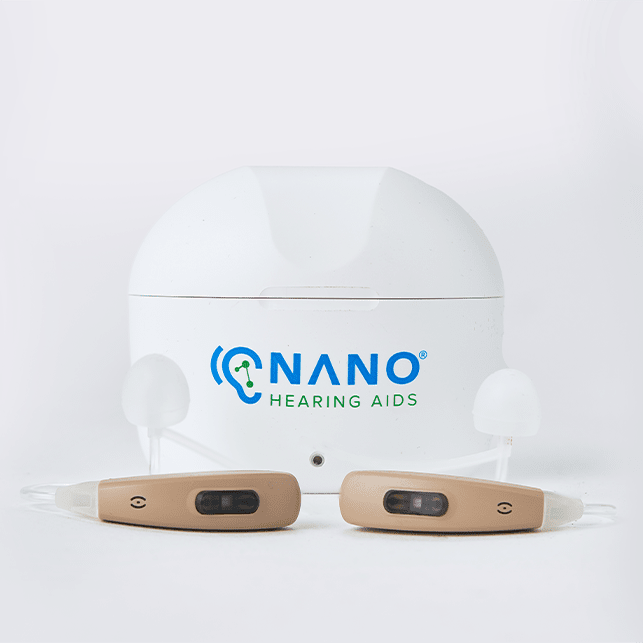OTC Hearing Aids Under $1000
This collection is empty
Continue shoppingFrequently Asked Questions
Read through our FAQs regarding your Nano hearing aids.
Are Nano hearing aids FDA approved?
Nano OTC hearing aids are FDA-registered, Class I.
Who are Nano OTC hearing aids designed for?
Nano OTC hearing aids are designed for those with difficulty hearing. Specifically, they are intended for those with mild hearing loss to moderate hearing loss, and for those who want to have normal hearing. They are not intended for those with severe hearing loss.
Are Nano OTC hearing aids prescription hearing aids?
No. There is no prescription needed for purchasing a Nano OTC hearing aid. Anyone with mild to moderate hearing loss can order them, as long as they are older than 18 years old.
Is a medical exam or fitting adjustment required to purchase Nano OTC hearing aids?
No. There is no medical exam or fitting adjustment required. Anyone can purchase them as long as they are older than 18 years old.
Are Nano OTC hearing aids visible?
Each of the Nano OTC hearing aids is nearly invisible.
Where can I use Nano OTC hearing aids?
Nano OTC hearing aids can be used in a variety of day-to-day places to help individuals have normal hearing. This can include summer concerts, social gatherings with friends, sporting events, watching TV at home, and many other activities.
What are the best hearing aids?
The best hearing aids will provide improved sound quality, be easy to use, and have a long-lasting charge to get you through the day.
How long will shipping take?
The OTC hearing aids are typically shipped within 1 business day from when the order is placed. It can take anywhere from 2 to 5 business days for the order to arrive.
Is there an age requirement for using OTC hearing aids?
Yes. Individuals must be over 18 years old to use the OTC hearing aids.
How does someone know they have mild to moderate hearing loss?
Someone might have mild to moderate hearing loss if they have trouble hearing speech in loud places or in groups, have difficulty hearing on the phone, need to increase the volume on the TV and radio, or if listening makes them tired.
Still wondering what Nano product is right for you?
Chat to one of our experts or give us a call today (866-292-6266)

